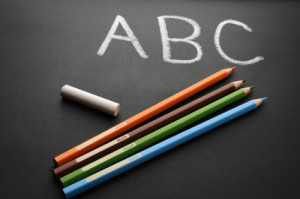 Everyone realizes that coders and clinical staff have to be trained on the new ICD-10 code set, but not everyone understands just what this entails.
Everyone realizes that coders and clinical staff have to be trained on the new ICD-10 code set, but not everyone understands just what this entails.
Don’t make the mistake of thinking that you can take a few hours of training, send your coders to a class, and you’ll be good to go. “This is a whole new ballgame, and it’s going to be tough,” said Maxine Lewis, owner of Cincinnati-based consulting firm Medical Coding & Reimbursement Management and author of Working With Insurance And Managed Care Plans: A Guide To Getting Paid.
First, you need to think about who in your practice needs to be trained. “Physicians and coders are the most important people to train, but almost everyone in the practice will need some familiarity with the new codes — lab assistants, radiology techs, [etc.]” said Lewis. “Even the clerical staff will need at least some familiarity. They will need to know the codes when requesting diagnostic tests or making hospital referrals,” she added.
The use of the codes goes beyond billing. The codes are how everyone in healthcare communicates about patients’ diagnoses, from the obvious — filing claims with payers — to the less obvious — public health reporting. “This is a new language and everyone has to speak it,” said Lewis.
Once you identify who needs to be trained, you need to get a training plan in place. If you’re thinking that you have plenty of time — after all, October is still seven months away — you might want to think again. According to Nancy Spector, director of electronic medical systems at the AMA, some people advise you not train too early, lest everyone forget what they’ve learned before the new system goes into effect.
Spector doesn’t think this is good advice. “It will just shorten the time you have to become familiar with the codes,” she said. Lewis agreed and pointed out that learning these new codes will not be as easy as some people seem to think.
“I’ve talked to people who say, ‘I’ve been trained and certified on this,’ then I asked them one question and they don’t know the answer,” she said. “Taking a class is not enough. You have to practice. Just taking a course or going through a training session is like learning to swim by watching a video. In order to learn these new codes well enough to use them accurately, you have to jump in the water and start swimming.”
You should jump in the pool before October. Brenda Edwards, CPC, an AAPC ICD-10 trainer, suggests that you start practicing the ICD-10 codes side-by-side with the ICD-9 codes so that you will become thoroughly familiar with the new codes well before you are required to use them. “When you code in ICD-9, ask yourself, ‘What will this be in ICD-10?'” Edwards also suggests practice/training apps that might help. She likes ICD Pulse, Precyse (flash cards), and Stat ICD-10 coder.
No matter how well-trained you are, you should be prepared for some bumps when the codes go live. “You can expect the productivity of coders to drop for a few months [after the transition],” Lewis said. Both lost productivity and coding errors will cost money, so you want to minimize those bumps. “There will definitely be a learning curve after October 1,” said Spector.
But in order to keep that curve from being too steep — or too expensive — start practicing now.
——————————————————
Prepare For The Medical Coding Certification Exam Here!
Originally published on: Diagnostic Imaging
Follow Medical Coding Pro on Twitter: www.Twitter.com/CodingPro1







This Post Has 2 Comments
Pingback: House Approves Legislation - ICD-10 Might Be Delayed Again | MedicalCodingNews.Org
Pingback: House Approves Legislation – ICD-10 Might Be Delayed Again | scrubs and suits
Comments are closed.